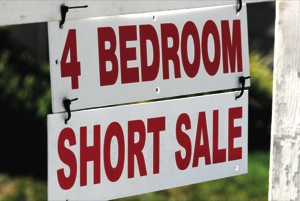
There are many different kinds of property listings. There are bank-owned properties or foreclosures, which are the same thing. There are probate sales, trustee sales and regular type sales. But the one type of sale that is in a complete classification of its own is the short sale. We have all heard the term short sale, but many people do not understand what a short sale is and what is entailed in the process of one. It is the most misunderstood type of sale, so it is very important for you to have a general understanding of this type of listing.
A short sale listing is a property that is listed on the market like any other property. However, the seller is typically upside down on the property; meaning that their loan balance on the home is higher than what the house is worth. So the seller tries to work with the lender or lenders on the sale, so that they can get out from the financial responsibility of the home.
In the beginning, a short sale starts out like a regular listing. An agent will list and market the property until they receive an offer and get the seller’s acceptance. Once the seller has accepted an offer, it is then sent to the lender for an approval. This is when the process becomes very different than any other type of real estate sale.
Once a bank receives an accepted offer from the seller on a short sale property it will typically take three to six months for the bank to respond with an approval letter. It is not uncommon for more than one lender to be involved, which makes the process more complex, simply because there are two lenders to deal with. In some cases there are even three lenders. Once the lender or lenders respond with an approval, they will always have conditions as part of the approval. This means that the lenders will approve the short sale as long as the buyer agrees to the lenders’ specific additional terms and conditions. Typical terms and conditions from a lender on a short sale is that the property is sold as is, meaning the lender or seller will do no repairs to the home or allow for any credit to the buyer to make repairs. It is also not uncommon that the lenders come back with a higher sale price. This is very problematic, because the buyer is typically under the impression that the price that the seller has agreed to is the same price that the lender will also agree to. But this is often not the case. Listing agents will often list a short sale property below the actual market value to generate buyer interest and to get offers. So if you pursue a short sale, please keep in mind that the price that the seller agrees to may not be that actual price that the lender will approve a few months down the road.
I am often asked why a short sale takes so much time to be processed and why they are called short sales. My answer is I do not know. There seems to be no logical or intelligent answer other than banks are all understaffed and short sales are the last thing that they allocate their resources to. In fact, in the real estate industry short sales have earned the nickname of “long and painful sales.” Once a buyer is educated on them or they have attempted buying one or two, they usually avoid them.
There are many other things that are unique to the short sale process. Sometimes other fees pop up that the lender and seller are not willing or not able to pay, so it will be the responsibility of the buyer to pay for them. Some possible examples of this are past due homeowner association fees or liens that are discovered on the property. I recommend that you get a good, seasoned agent who will be able to guide you through the process.
Until we meet again, create and enjoy an amazing home life.
Trent St. Louis is a licensed Real Estate Agent and a member of the National, California and San Diego Association of Realtors. You can reach Trent at 619-300-1621, at SpecialAgentTrent@gmail.com or at his office, The Metropolitan Group. (CADRE#01273643)











